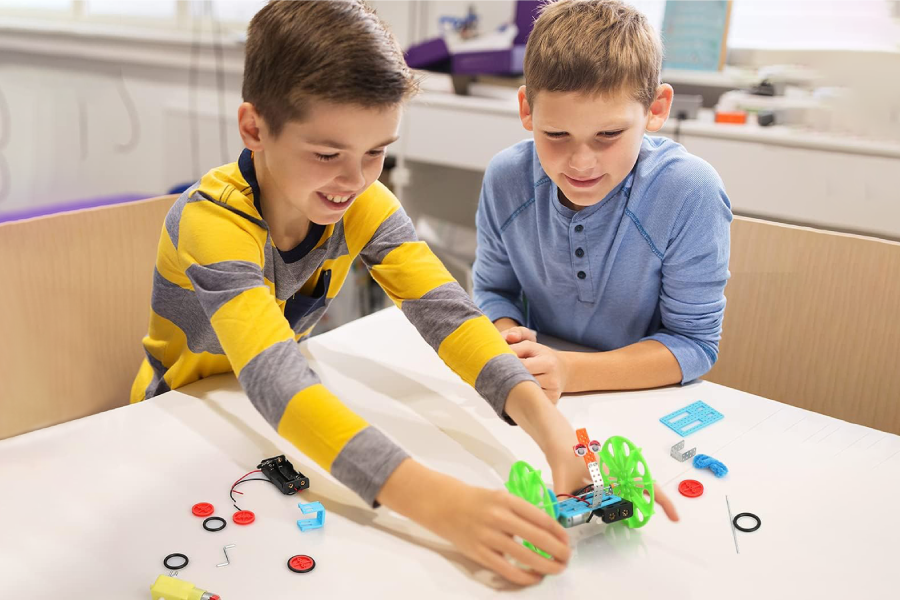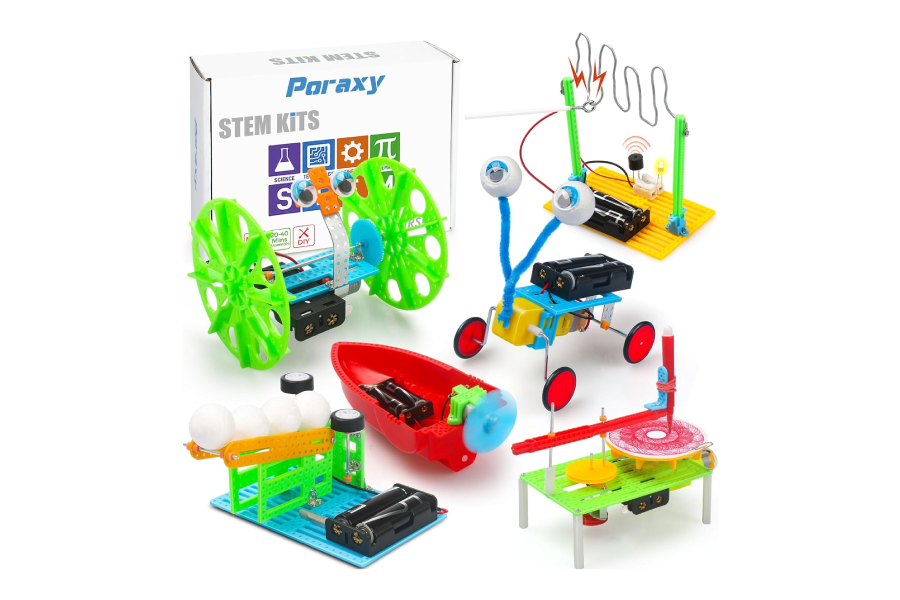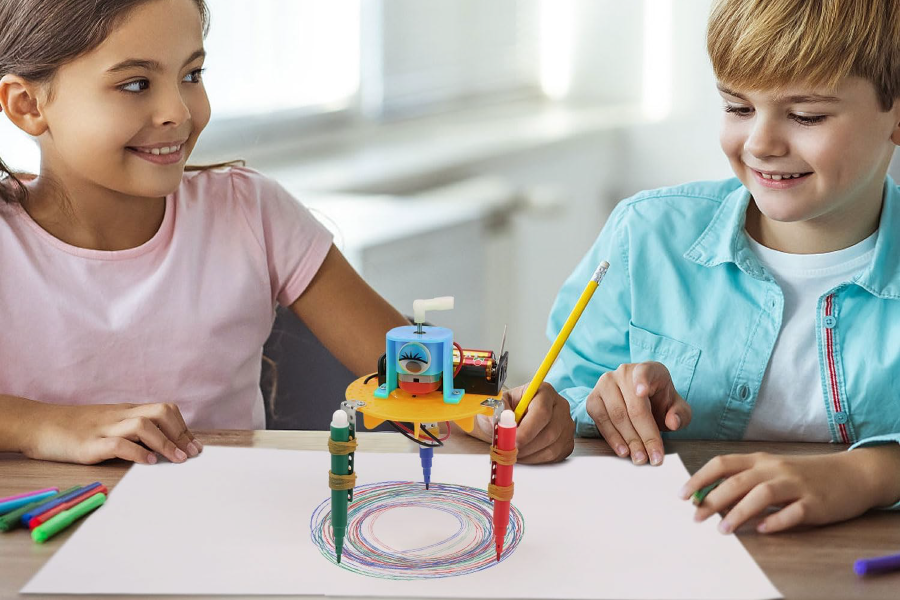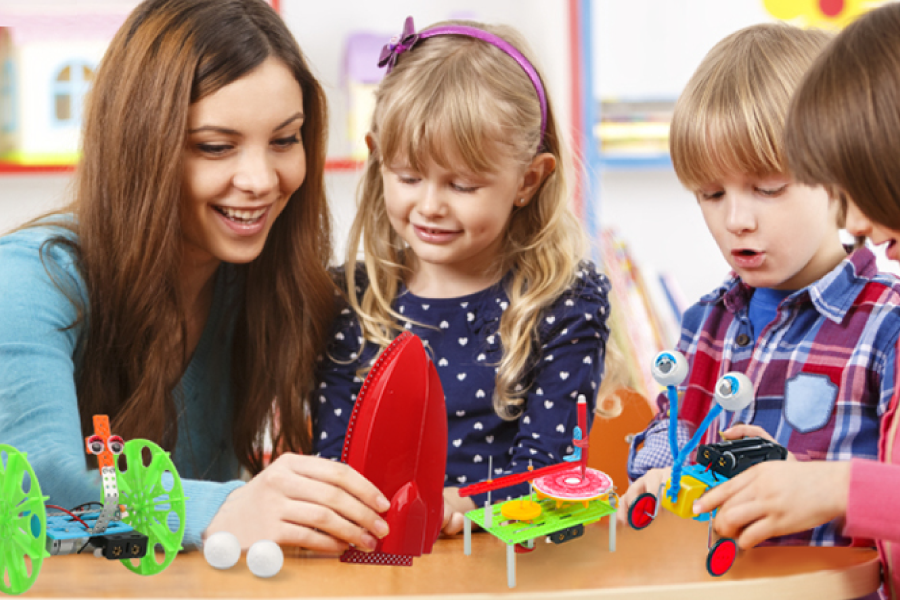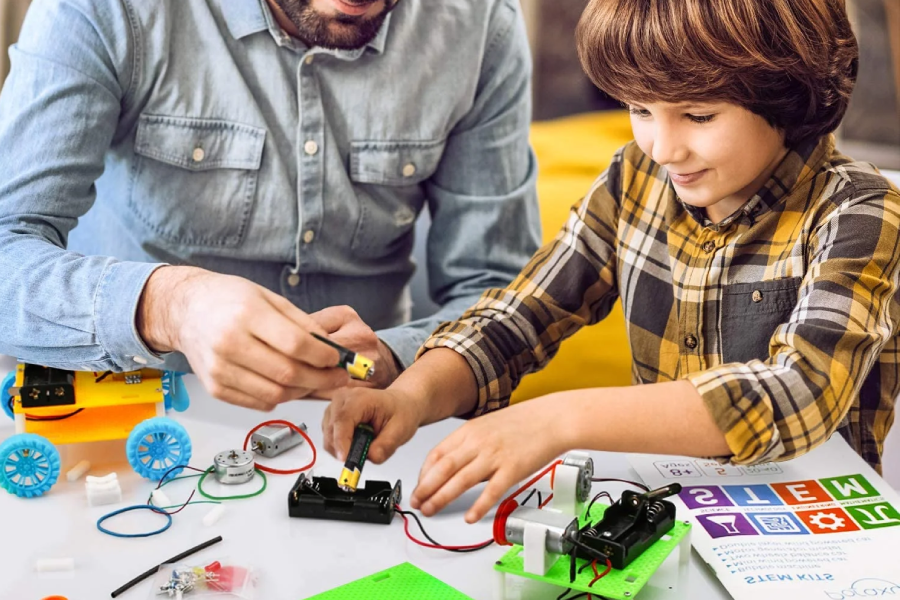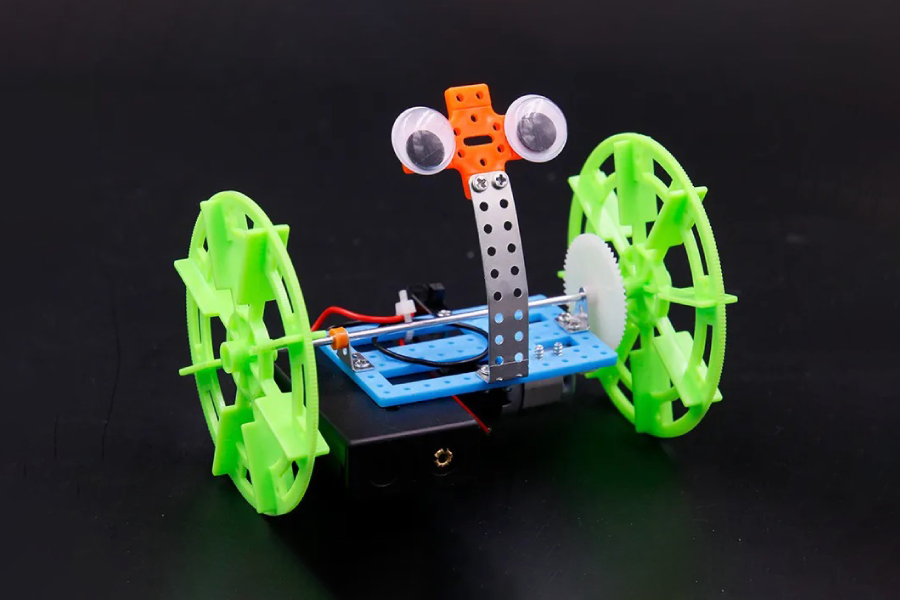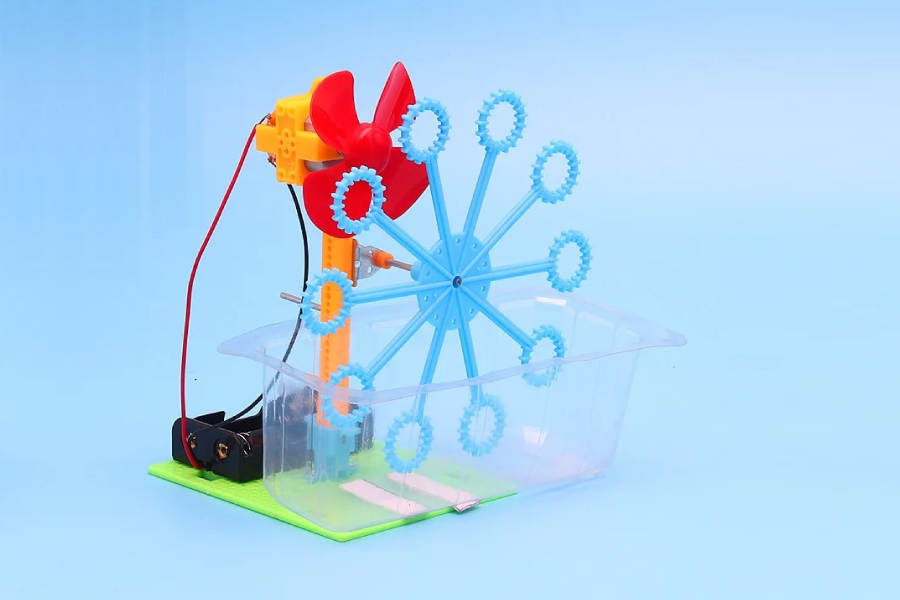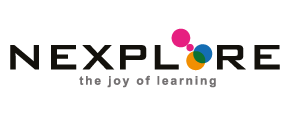
Build a Bot
Calling all engineers and scientists!
Build a Bot is a fun inquiry-based hands-on STEAM experience that engages students in design and robotics. In this program, students practice their engineering skills to create a series of robot models, each operating with a different mechanism and fulfilling a unique purpose. Students challenge their hands and minds to build fascinating bots, like the Fiber Optic Lamp, Powered Boat, Bubble Blower, and more! This program is fully aligned with NGSS standards and students even get to keep their creations.
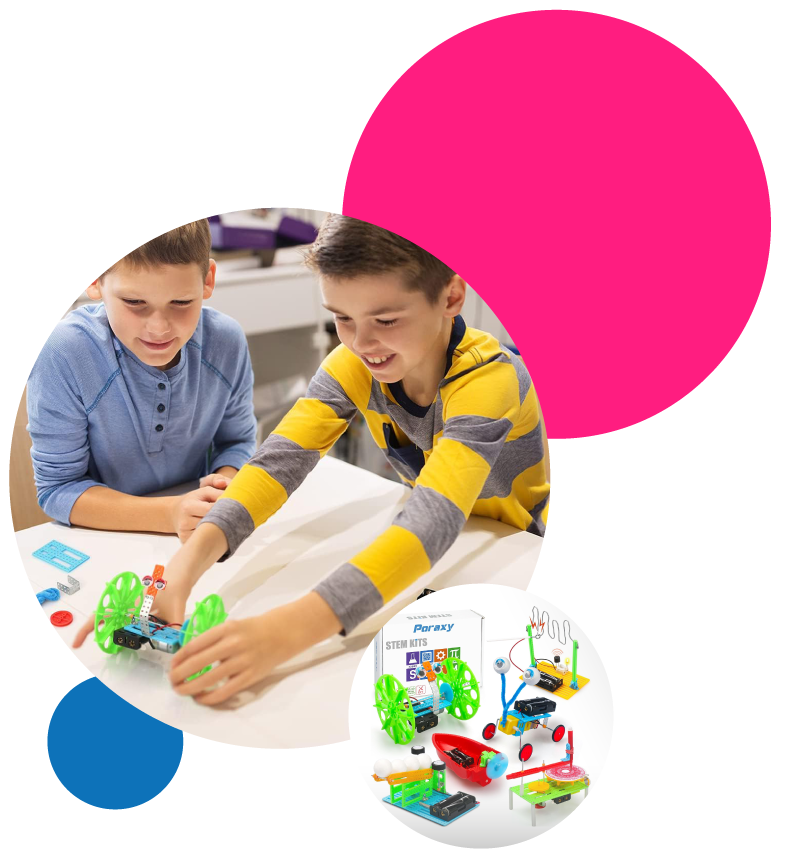
Space Requirements
Mandatory


Standard Classroom
Preferred


Storage space
Preferred


Projector
Preferred


WiFi
Gallery
